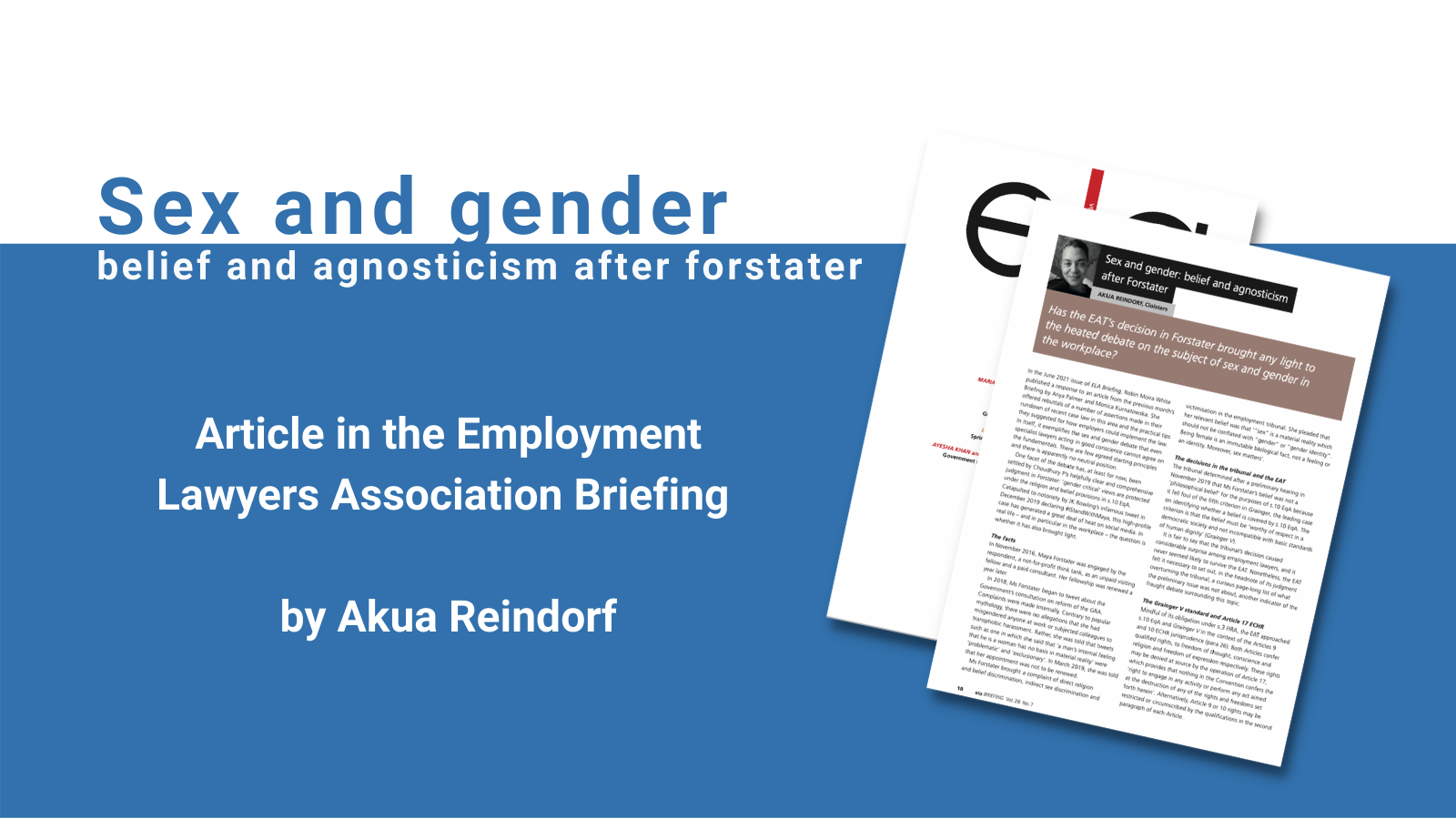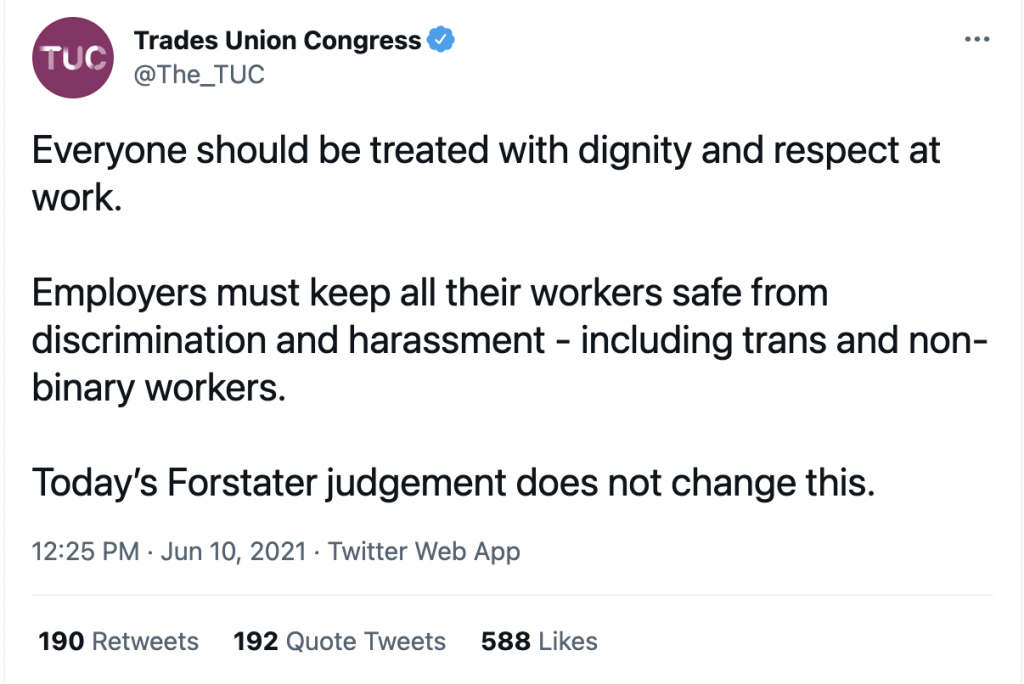Sex and gender: belief and agnosticism after Forstater

The August 2021 edition of The Employment Lawyers Association (ELA) Briefing features a very helpful article by Akua Reindorf of Cloisters on the Employment Appeal Tribunal (EAT) Judgment in the Forstater case. She asks “Has the EAT’s decision in Forstater brought any light to the heated debate on the subject of sex and gender in the workplace?”
Reindorf praises Mr Justice Choudhury’s “helpfully clear and comprehensive judgment” as providing clarity that will help other employers and employees. Her article boils down the key points.
While it is written for a legal audience, it will be of interest beyond employment lawyers. We would encourage you to make use of this short article; share it with your HR department, university diversity and inclusion lead, your trade union, or anyone else who would benefit from an accessible, accurate introduction to the case and its implications.
Belief and lack of belief: worthy of respect in a democratic society
Reindorf sets out the core legal arguments of the case, in particular the relationship between the rights to freedom of belief and freedom of expression as set out in Articles 9 and 10 of the the European Convention on Human rights, and the limits to their expression via Article 17, which prohibits citizens from abusing the rights of others.
The EAT found that only beliefs that “espouse…violence and hatred in the gravest of forms…aimed at the destruction of Convention rights” can be classified as not “worthy of respect in a democratic society”.
| sex is a material reality, which should not be conflated with “gender” or “gender identity“. Being female is an immutable biological fact, not a feeling or an identity. Moreover, sex matters. |
As Reindorf notes, the EAT found that the gender critical beliefs it looked at did not come “anywhere near to approaching” this level, not least because it remains the law of the land that sex is binary and immutable.
She emphasises that the gender identity belief that trans men are men and trans women are women was also found to satisfy the test for being protected against discrimination and harassment. So too did lack of belief, which “may arise from simply not having any view on the issue at all”.
“Misgendering”
The tribunal considered the question of “misgendering” (although it did not define it). Reindorf notes that the EAT found that the tribunal had made an error in law in effectively imposing a “blanket restriction” on the use of language to describe men and women.
She notes that the EAT pointed out that “the Gender Recognition Act does not compel a person to believe something that they do not” and that where it refers to a person becoming “for all purposes” the acquired gender its meaning is restricted to “for all legal purposes”. Moreover, the EAT said that “misgendering” does not inevitably amount to harassment, but that a careful assessment of the relevant circumstances which might justify restrictions on free speech is always required, and any restrictions must be proportionate.
Recommendations for employers
Many organisations and authorities responded to the judgment with statements that emphasise the rights of transgender people.

Reindorf frames employers responsibilities in a more balanced way:
How, after Forstater, do employers discharge their newly clarified obligations in equality law, not only to gender critical workers but also to those who hold the ‘gender identity belief’ and, importantly, to the vast swathes of people who are agnostic on the matter or who are wary of wading into the sex and gender debate?
She makes three recommendations to employers:
- Consider whether diversity and inclusion training adequately takes account of belief as a protected characteristic.
- Consider whether the definition of harassment in policies is sufficiently nuanced to take account of the range of protected beliefs on sex and gender.
- Think carefully about the extent to which publicly expressed corporate values and internal communications serve to compel adherence on the part of their workers to one side of the debate or the other.
Thank you to the Employment Lawyers Association and Akua Reindorf for permission to republish the article.
